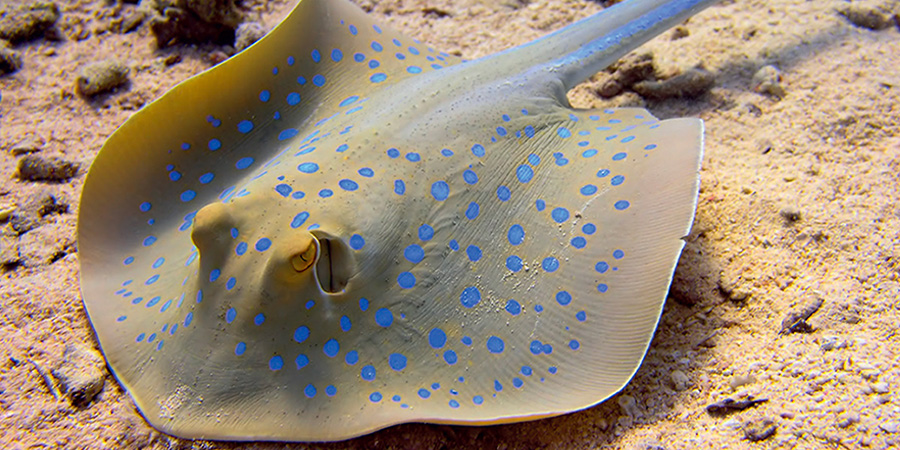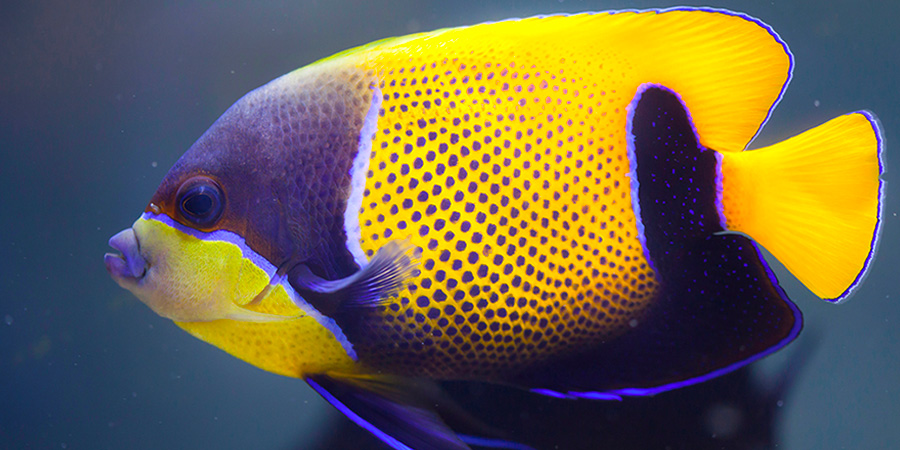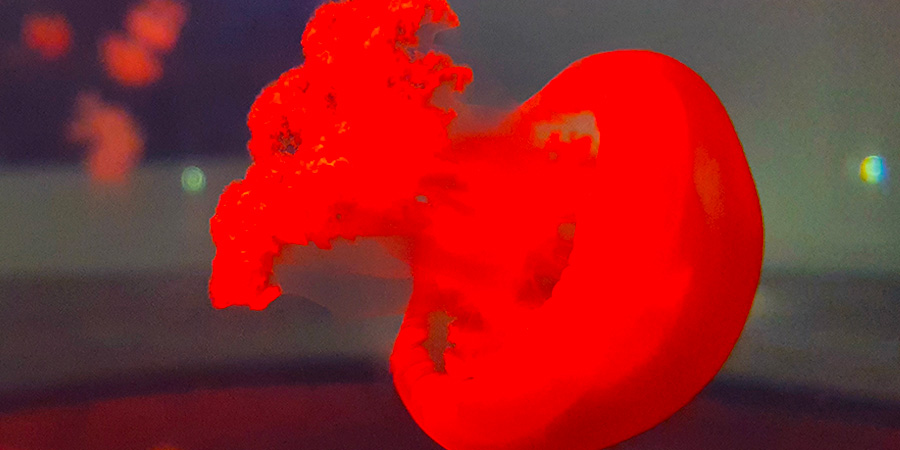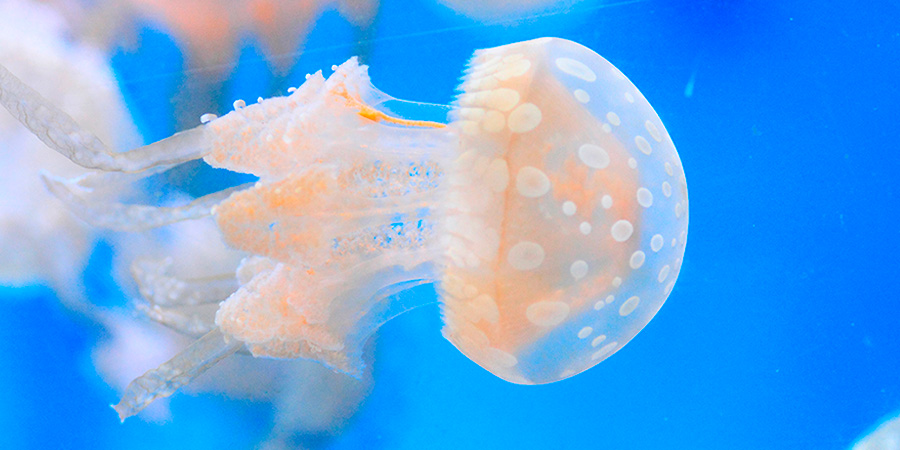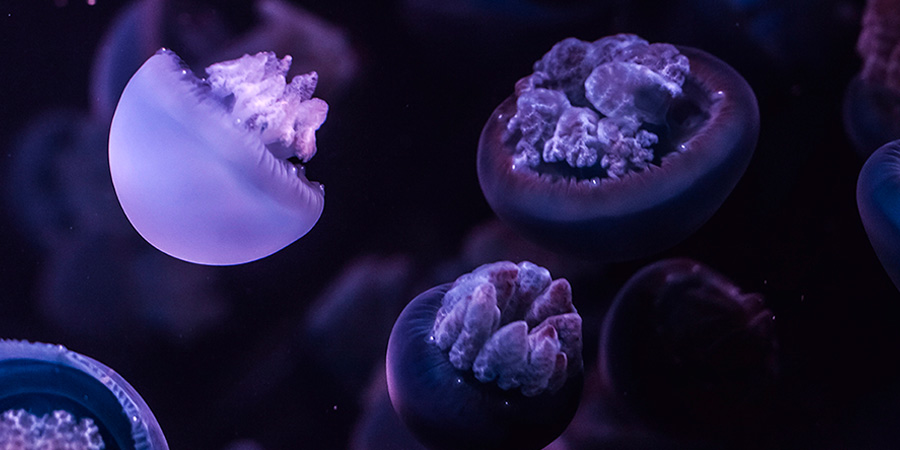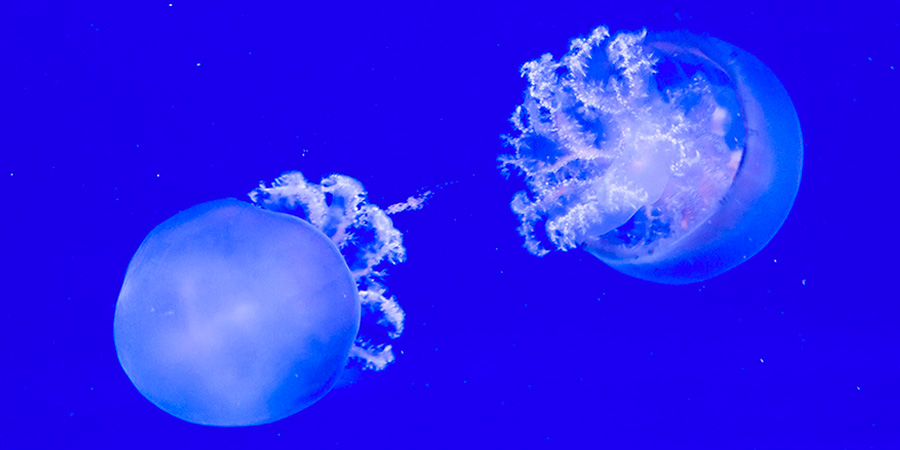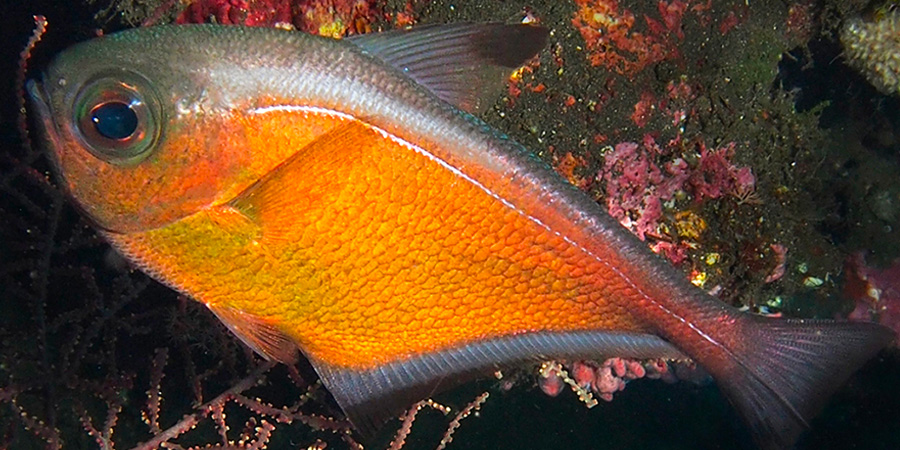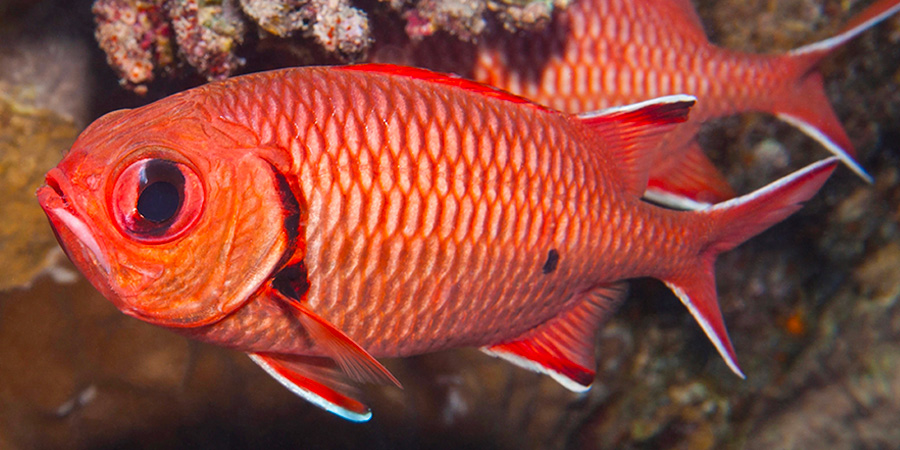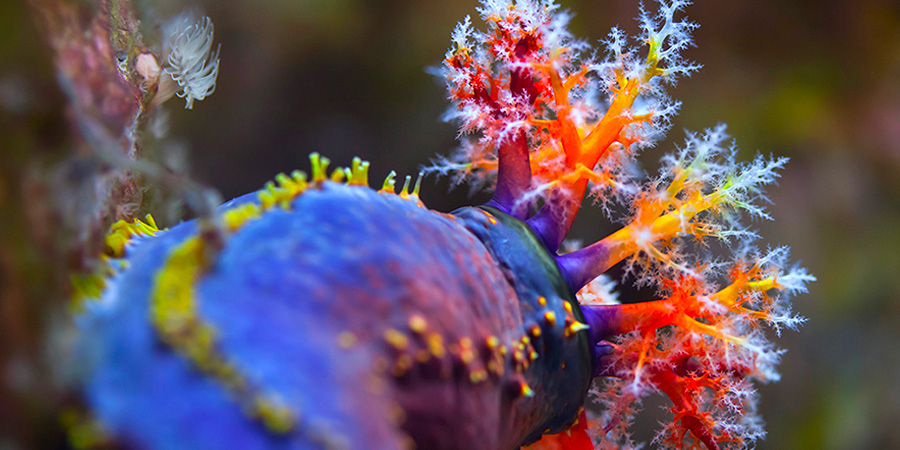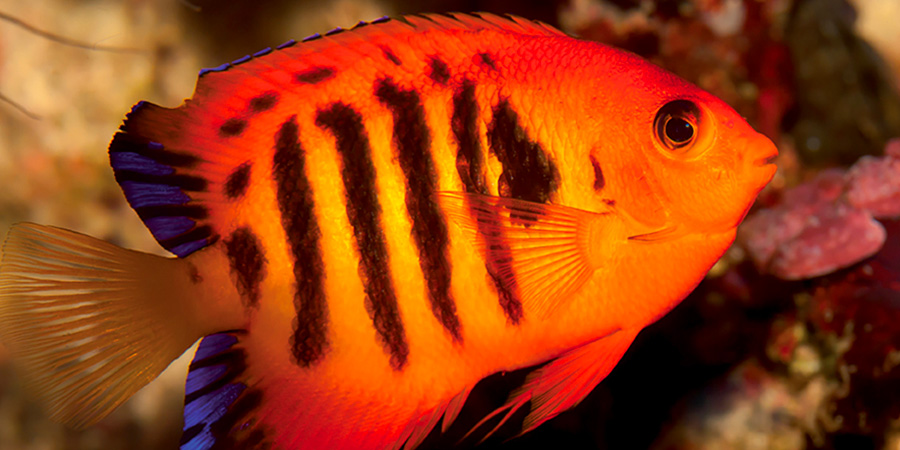
Scientific name : Centropyge loricula
Family : Pomacanthidae (marine angelfishes, 91 species)
Size : Up to 15 cm
Distribution : Tropical Pacific Ocean, from the Australian coast to Hawaii
Biology : The flame angelfish is a discreet reef inhabitant. It feeds on small invertebrates (especially crustaceans, worms and sponges) and algae found among corals and in the crevices of the sea.
This species is a sequential hermaphrodite, it is born as a female before being transformed into a male.
IUCN status : Least concern

